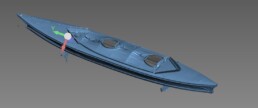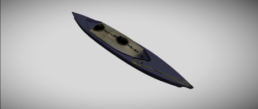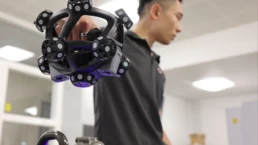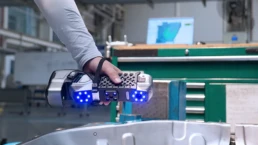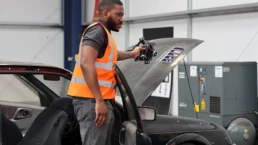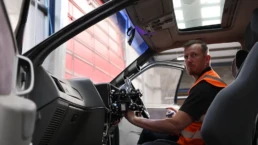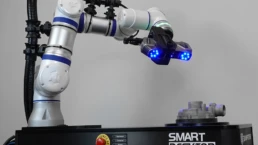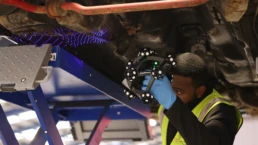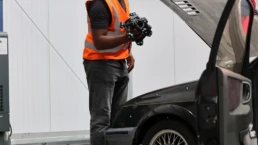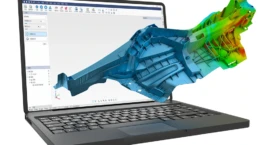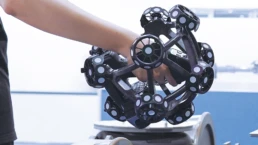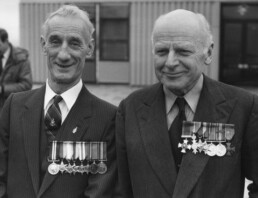
“We wanted to advance our virtual museum project and look for a scanning company to help us scan the big and intricate artefacts in the collection. These scans are used for a virtual museum project to allow people to see the artefacts, especially those who are around the world or unable to visit the physical museum” – Dr Richard Wooldridge, Museum Founder.
The Story of CMSM
The Combined Military Services Museum, located in Maldon, Essex, is the result of a lifelong passion for military artefacts that began in 1968 when Richard Wooldridge, then a 7-year-old boy, discovered a 1937 pattern backpack. This sparked a fascination with military history, leading to a personal collection of his family’s military items and subsequent discoveries from local woods, fields, and beaches using metal detectors.
As Richard’s collection grew, he dreamt of setting up a museum to share these treasures with the public. With the support of fellow collector Keith Turner, who contributed rare items like the Cockle canoe and Special Forces insignia, Richard’s collection outgrew his home and required a dedicated space.
In 1996, after recognising the national importance of Richard’s collection, the government assisted in establishing a registered charity to house the artefacts. Named the Combined Military Services Museum, it reflected the involvement of all three military services in the collection.
After several years of fundraising, artefact donations, and major building work, the museum found its home in a former bonded wine warehouse in Station Road, Maldon. Offering high security and potential for a quality museum, this building underwent significant renovations, including the addition of a second floor and high-security features.
Finally, after 36 years of planning, the museum opened its doors on July 5th, 2004. The museum, which houses an award-winning collection of British military artefacts from the English Civil War to today, continues to grow and develop. It stands as a testament to Richard’s determination and the support of countless individuals, preserving items of national historical importance for the public’s enjoyment and learning.
Operation Frankton
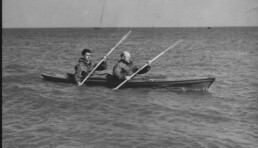
In the darkest hours of World War II, a daring and covert British mission known as Operation Frankton unfolded. This audacious plan aimed to cripple the German-occupied port of Bordeaux by targeting enemy cargo ships with limpet mines, ultimately changing the course of the war. Launched in December 1942, this top-secret mission saw ten fearless commandos from the Royal Marines Boom Patrol Detachment embark on a perilous 250-mile journey through enemy territory. Led by the courageous Major Herbert ‘Blondie’ Hasler, these men navigated treacherous waters in canoes, braving extreme weather conditions and the constant threat of discovery.
Despite the overwhelming odds, the commandos persevered, successfully placing mines on several enemy vessels and inflicting significant damage on the German war effort. However, the cost was high – only two of the ten men survived the mission, escaping through Spain and Gibraltar to return home as heroes.Their bravery and determination would later inspire the formation of the Special Boat Service, a modern-day elite special forces unit. Today, the legacy of Operation Frankton lives on as a testament to the unwavering courage of those who fought for freedom during one of history’s darkest chapters.
A seemingly unremarkable vessel played a pivotal role in the success of the audacious Operation Frankton. The Mk2 Cockle, a collapsible two-man canoe whose ingenuity and resilience proved instrumental in navigating the treacherous waters to strike at the heart of the German-occupied port of Bordeaux. The Mk2 Cockle was specifically designed for covert operations, combining stealth, portability, and durability. Made from a lightweight canvas stretched over a collapsible metal frame, this canoe could be easily disassembled and carried by the commandos on their daring journey behind enemy lines.
Despite its humble appearance, the Mk2 Cockle’s performance in the hands of the Royal Marines Boom Patrol Detachment was nothing short of extraordinary. Paddling under the cover of darkness, the tenacious commandos relied on these nimble vessels to infiltrate the heavily guarded harbour, successfully placing limpet mines on enemy cargo ships. Although only two of the ten men survived the perilous mission, the impact of their courageous efforts was undeniable. The Mk2 Cockle’s role in Operation Frankton not only helped turn the tide of the war but also laid the groundwork for future special forces operations. Today, this unsung hero of WWII stands as a testament to the power of innovation and the indomitable spirit of those who fought for freedom.
The Mk2 Cockle Canoe
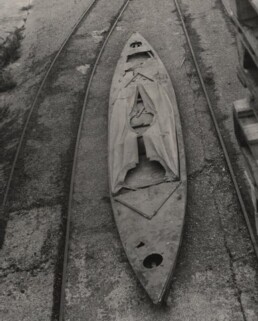
CMSM houses the only surviving original MK2 Cockle built for the Frankton Raid. During research by the Late Paddy Ashdown MP the canoe was identified as almost certainly being ‘Cachalot’ damaged during the launching of the canoes from the submarine and returned to the Saro boatyard on the Isle of Wight for repair. However, the production had already shifted to Parkstone Joinery in Dorset, where a slightly modified design was being implemented to reduce capsizing risks. Consequently, the canoe was never repaired.
Rediscovered at Saro works in the 1980’s, Cachalot had been waiting patiently for its moment to shine. The museum took on the task of restoring this invaluable artefact, using the original plans and sketches by its designer, Goatley, and the raid commander, Hasler. Visitors can now marvel at the restored canoe, alongside copies of the paperwork and other equipment used during the daring Frankton Raid, offering a truly immersive and engaging experience into a pivotal moment in history. This canoe is the only known example of the early MKII canoe design.
Preserving History With 3D Data
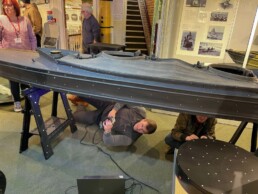
In an effort to preserve the legacy of the last remaining Mk2 Cockle, T3DMC ventured to the museum to conduct a full surface scan of the historic artefact. Given the limited space available for storage and manoeuvring, the cutting-edge SIMSCAN from Scantech – the world’s smallest and lightest handheld 3D scanner was used to capture the 3D data. This remarkable device boasts unparalleled versatility in capturing 3D data, deftly navigating tight corners and narrow spaces of the canoe where other handheld scanners would falter. The successful acquisition of the Mk2 Cockle’s 3D data not only ensures the preservation of this invaluable piece of history, but also showcases the incredible capabilities of modern scanning technology.
